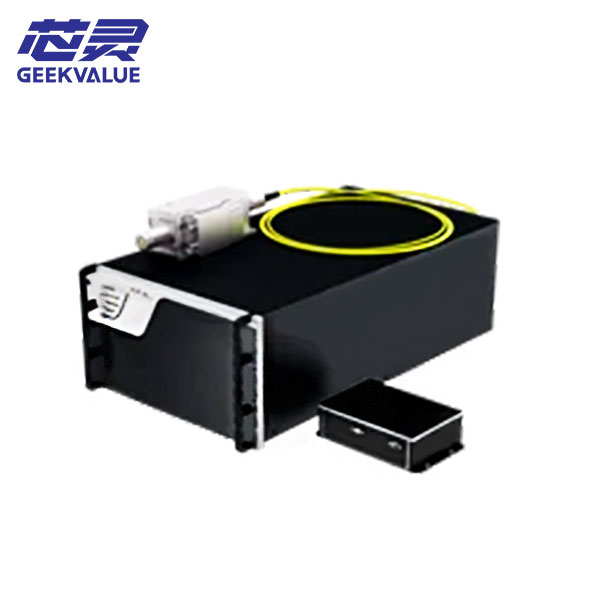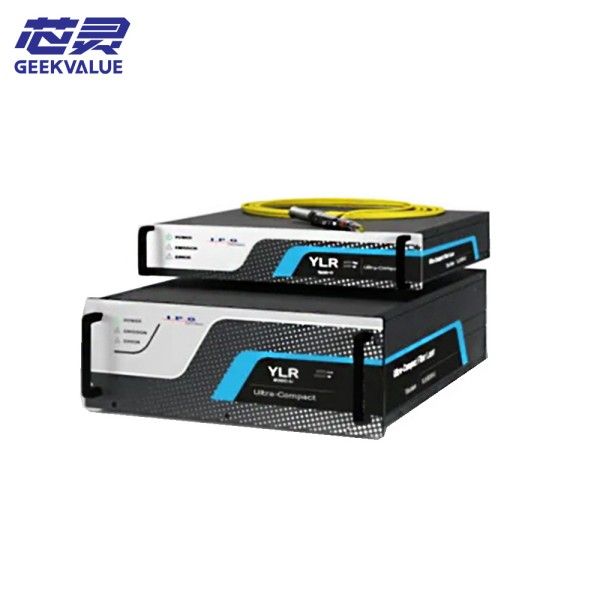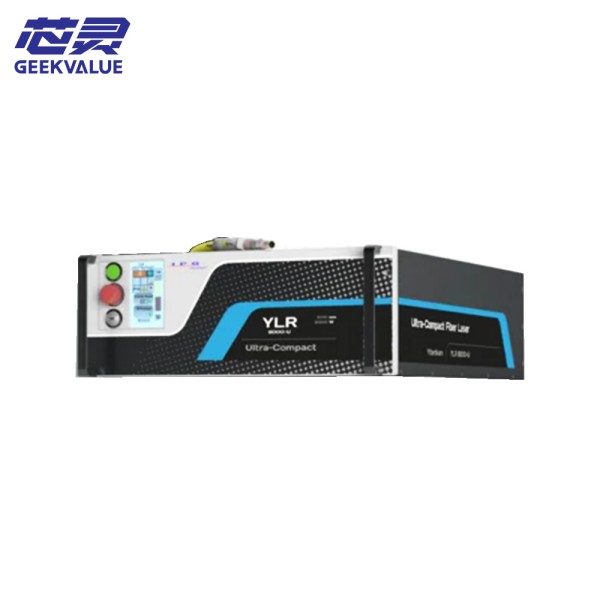IPG Photonics' YLPN-R series is a high-pulse-energy nanosecond fiber laser that combines the reliability of fiber lasers with the high-energy characteristics of solid-state lasers. The following is a detailed introduction to its core principles and functions:
1. Working Principle
Seed Source + Multi-stage Amplification
Adopts **Master Oscillator Power Amplification (MOPA)** structure:
Seed Source: Low-power nanosecond pulses are generated by semiconductor modulation or electro-optical modulation, and the pulse width and repetition rate can be precisely controlled.
Fiber Amplification: Multi-stage amplification (pre-amplification + power amplification) is performed through ytterbium-doped (Yb³⁺) fiber, combined with double-clad fiber technology to improve energy conversion efficiency.
Pulse Compression (Optional): Some models compress the pulse width through nonlinear effects to achieve higher peak power.
High Energy Design
Use large mode area fiber (LMA) to reduce nonlinear effects, combine side pump coupling technology to improve pumping efficiency, and achieve single pulse energy of millijoules (mJ).
Thermal Management
The high surface area to volume ratio and active cooling design of the fiber ensure stable output at high energy.
2. Core features
High pulse energy
Single pulse energy can reach more than 10mJ (such as YLPN-1-10x100 model), suitable for applications requiring high energy impact (such as cutting, drilling).
Flexible parameter adjustment
Pulse width range: 1–300ns (adjustable or fixed)
Repetition rate: 1Hz–100kHz (depending on the model)
Peak power reaches MW level, supporting short pulse width and high burst.
Excellent beam quality
M² < 1.3, close to the diffraction limit, suitable for precision processing (such as micro-hole processing, film removal).
Industrial reliability
All-fiber structure is shock-resistant and dust-resistant, without optical component misalignment problems.
Lifespan exceeds 100,000 hours, suitable for 24/7 continuous operation.
3. Các tình huống ứng dụng điển hình
Precision processing
Drilling: Aerospace blade air film hole (high energy penetration metal).
Cutting: Split cutting of brittle materials (sapphire, glass).
Surface treatment
Laser cleaning: removal of coatings/oxides (such as restoration of cultural relics).
Texturing: friction enhancement of metal surfaces (auto parts).
Research and medical
LIBS (Laser Induced Breakdown Spectroscopy): high energy excitation of sample plasma.
Laser surgery: selective ablation of tissue (such as dentistry, dermatology).
4. Comparison of technical advantages
Features YLPN-R series Traditional solid-state laser
Maintenance requirements Basically maintenance-free Optical components need to be calibrated regularly
Energy stability ±1% (full temperature range) ±3–5%
Electro-optical efficiency >30% <15%
Size Compact (fiber integration) Large (water cooling system)
5. Notes
Optical configuration: collimation/focusing lens (such as IPG's FLD series) is required to adapt to different working distances.
Safety protection: high energy must comply with Class 4 laser safety standards (protective glasses, interlocking device).
IPG's YLPN-R series achieves a balance between high energy and industrial stability in the nanosecond laser field through innovations in fiber optic technology, and is particularly suitable for scenarios with stringent requirements on pulse energy and precision.





